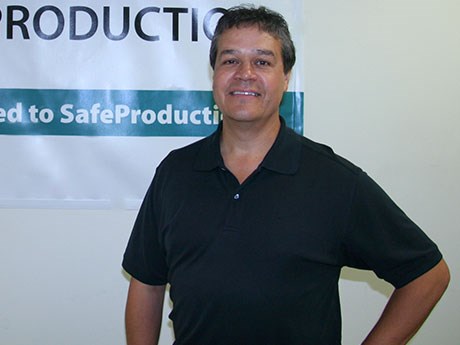Safety a priority for Sudbury mine
In early September, workers at Totten Mine achieved one million hours of work without a lost time injury, a milestone for the new mine, which had up to 600 people from six different contractors working together to bring the mine into production.
Project manager Bob Booth, who joined Totten in February 2011, came to the mine with a goal of redefining excellence in on-the-job safety. He attributes the successful safety record to the “Team Totten” approach—a system of checks and balances adhered to by all those working on the project.
“Team Totten is about one team, one way to zero harm because we’re dealing with six different contractors here to execute a very complex project,” Booth said. “We deal with some very serious issues, but we try to do it in such a way that we engage everybody, and that’s the piece that’s hard when something’s complex.”
Contractors working on the project included Cementation, SCR Mining and Tunnelling, Redpath, Technica Mining, Swick, and T. Bell Transport. Gary Annett, Totten’s underground project execution manager, said those contractors bring with them safety tips they’ve learned on other jobs in Northern Ontario, across Canada and around the world, which help keep awareness about safety at the forefront of everyone’s mind.
Through the Near Miss Program, workers share what they’ve learned during their shifts to help enhance safety.
Supervisors look for trends that can be addressed, or predict problems that may come up in the future, Annett said.
A recent example is the elimination of a bump in the road in one of the tunnels. Taking 30 minutes to remove the bump eliminated a potential safety hazard for scoop tram drivers and reduced the possibility of any future rollovers. “It’s through all those communications and safety talks that we have that we believe we’re achieving these results,” Annett said.
Thousands of these ideas are registered and tracked at any given time, and Totten addresses and fixes them at a rate of about 95 per cent, Booth said. The issues and their progress are posted for all workers to see in an effort to remain transparent about how Vale addresses their concerns.
Totten, like all Vale mines, employs the Safe Production program to assess and address risk in the workplace. Launched a decade ago at Vale’s Thompson Mine in Manitoba, it’s a process followed by everyone on site, whether they work underground or in the office, mine manager David Pisaric explained.
“It’s intended to be reflective and there is a process in place to help you manage your way through the work,” he said.
Ultimately, Vale wants to pursue peak production and profitability while ensuring its workers get home safely at the end of the day, he said. Gone are the days when Vale’s competitors were the companies down the street. Now, the mining giant is competing in a global marketplace and must be at peak performance with respect to safety.
Central to the program is the SLAM analysis, which asks workers to “stop, look, assess and manage” risks by assessing tasks before they’re performed. Each step requires workers to ask a series of questions and guides them going forward.
“Before we perform a task, we would like our employees to SLAM the job and to take a breath, have a look at the work that’s going to be tackled and then to manage that going forward,” Pisaric said.
The goal is to have zero harm, but it requires co-operation from everyone, and communication is integral to the program’s success, he said.
Totten’s one million hours of work without a lost time injury coincided with 16,000 feet of development since November of last year. Total recordable injuries underground for this year totalled 3.58, a statistic that can hold up against any mine in North America, Booth said.
“Building a mine is fun, but the only piece that really makes a difference in someone’s life is when they come to work and they can go home safe every day,” he said. “We’re building a mine to create wealth for the company and the community, but what’s more meaningful is knowing that people can go home safe.”



